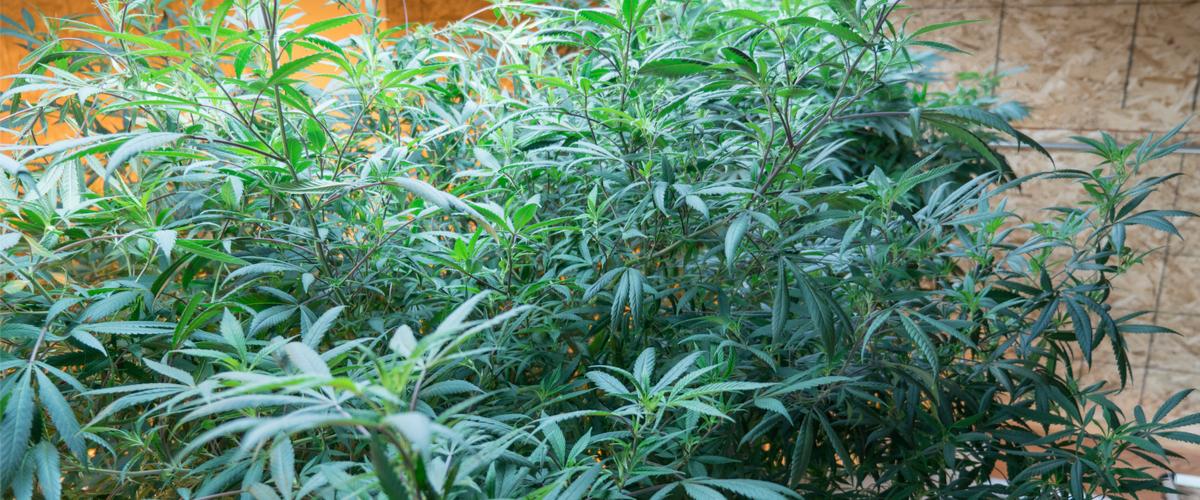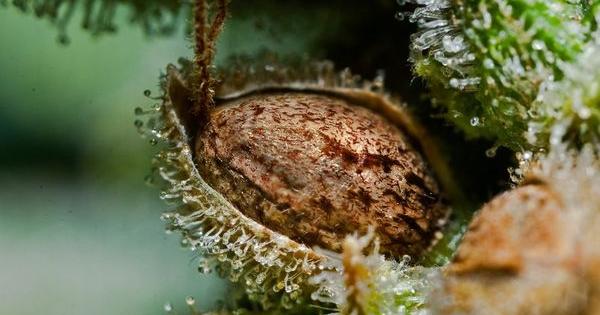- When you grow cannabis regularly, you can sometimes come across a specific plant that showcases exceptional features.
- Aroma, flavour, effect, productivity, endurance, or physical appearance: all these characteristics amongst others, either alone or combined, can sometimes make a specific specimen worthy of preservation.
- In any case, all reasons are valid to want to preserve a mother plant. In order to help you with this process, we’ve come up with a list of selection criteria so that you can keep your favourite plant in best condition for as long as possible.

Growing cannabis from seeds is a really interesting and fascinating adventure as it allows you to discover individuals of the same lineage with slightly different characteristics.
This is a unique process that will turn out to be even more fascinating if you grow from cuttings rather than seeds. With this method, you can come across plants that display unique features, which is always a thrilling experience even for expert growers.
This is greatly due to that artistic dimension associated to the exceptional, that from time to time surprises us with the exclusive characteristics of an individual plant. And it's only natural for any grower to want to keep and preserve the qualitative traits of a unique specimen. However, those remarkable traits can sometimes be deceiving… In order to avoid any nasty surprises, best to follow our guidelines!
Criteria to consider for the right selection of a cannabis mother plant
Selection criteria are subjective as they depend on personal tastes and expectations, or can respond to a specific professional objective. However, there are certain general points worth mentioning:
1) Germinative vigour of cannabis seeds:
The germinative vigour of the seeds is the first indicator of a plant's energy and global potential. Sometimes it depends on the genetics of the seed and can be a distinctive trait of the lineage that the plant belongs to. Nowadays most hybrids on the market are rather complex polyhybrids created by breeders in search of strains with one or several specific characteristics.

In genetics we always talk about statistics because nothing's absolutely certain when you're dealing with living beings. This is why different individuals from the same genetic family can exhibit differences, which can complicate the selection process when trying to identify a specimen with optimum overall features.
Unfortunately perfection doesn't often exist, but in general terms good germinative vigour is a great indicator of a seed's potential, although, yet again, everything depends on the specific cannabis strain that you're dealing with.
2) Development of the radicular mass:
The energy and growth speed of the root system are also factors to take into account when selecting a mother plant. As already explained in a previous article, the roots constitute the digestive system of plants, and, together with a strong immune system, promote quick and robust structural development.
Plants that showcase quick and vigorous development of their radicular mass often benefit from a greater clone propagation capacity. The cannabis plant's radicular system shows great potential at global level, and the specimens with vigorous roots work really well with this tecnique.
3) Development of the vegetative structure:
Attention must be paid to the strength and homogeneity of the plant during the development of the different components of its vegetative structure: main cola, nodes (internodal spacing), and secondary branching.
This way you'll be able to define the speed of growth during the vegetative phase as well as which growing techniques to choose in order to obtain a specific result. In addition, it'll provide you with an approximate idea of the plant's flower production capacity (i.e. its yielding potential), and you'll be able to roughly calculate the duration of its full growth cycle.
4) Development of the foliar mass:
You need to keep a close eye on this part of the plant at all times. You must look out for the homogenous formation of the petiole, the global shape and colour expression of the leaves, and their nervation distribution. Regardless of whether the strain is sativa, indica or ruderalis, it's always preferable that the leaves have similar size and shape, and don't look wrinkly or deformed.
5) Resistance against fungi and insects
This is another important point to keep in mind as a weak immune system can lead to serious problems during either of the two main phases of development (vegetative and flowering), making the specimen less interesting for future projects. This characteristic directly depends on the heritage and genetic combination of one or more genetic lines.
6) Hermaphroditism:
This is a delicate subject that raises many questions amongst growers and breeders alike, who are fully aware of the fact that this phenomenon is really hard to control.

Contrary to what one might think, hermaphroditism is not necessarily an indicator of a breeding project gone wrong. The reasons why this occurs are often due to other factors such as the dominance or recessiveness of the male genes inherited from the genetic line in question, which are transmitted in different proportions during the creation of new strains.
Since most quality cannabis seeds currently on the market are F1 polyhybrids, this often results in the creation of risky and unstable crosses that open the door to millions of genetic combinations. This is a fascinating subject that allows you to discover very different and unique specimens within the same genetic line. The negative side to this story is that these variations can lead to the creation of plants that produce male flowers to a greater or lesser extent.
Controlling this is really complicated.
In order to identify their response to stress and to isolate the occurrence of hermaphroditism as much as possible, our strains are subjected to thorough testing and intergenerational selection. Nonetheless, this issue cannot be completely controlled as we've already mentioned the uncertainty inherent to working with living beings.
However, hermaphroditism is only a temporary issue. This is why, as a first course of action, we recommend the removal of the male flowers that may appear during the blooming phase.
Fortunately this is a phenomenon that occurs infrequently; but if this problem persists and becomes difficult to manage, it is best to isolate the plant and eventually dispose of it should things not evolve in a positive way. If instead you decide to keep it, you need to realise that hermaphroditism will persist indefinitely.
7) Flower development:
The things you need to keep an eye on during the flowering phase of your cannabis plants include the growth speed of the buds and how they form. These should ideally have a homogeneous structure and a good flower/leaf ratio, and should produce a significant amount of resin trichomes.
It is also important to identify the moment in which the blooming will take place in order to ensure appropriate nutrition and thus improve the yielding capacity of your cannabis plant and overall quality of its flowers.
8) Analysis after harvest (smoke report):

The key moment of the whole process arrives after the plant has been harvested and dried. This consists of analysing its flower quality as objectively as possible.
Aside from its bag appeal, its aroma, taste, effect, and final yield, now is the time to judge whether this individual that you've been nurturing through the full growth cycle is worth preserving.
It's in this phase that you'll have all the tools you need to form an opinion with complete certainty, sometimes with pleasant surprises and others with huge disappointments!
Conclusion:
If you spot major deficiencies in any of the 8 points mentioned above (for instance if the selected plant has problems rooting; if it grows slowly or has a fragile structure, perhaps with malformations; or if it gets easily attacked by plagues or diseases), then the best move will probably be getting rid of the plant.
However, if its aroma, flavour or effect are particularly outstanding, then the plant might be worth keeping. As we mentioned at the beginning, this is a subjective choice that responds to personal selection criteria. Therefore everything is possible! Choose according to your personal preferences and you definitely won't be disappointed.




Comments from our readers
There are no comments yet. Would you like to be the first?
Leave a comment!Did you like this post?
Your opinion about our seeds is very important to us and can help other users a lot (your email address won't be made public).